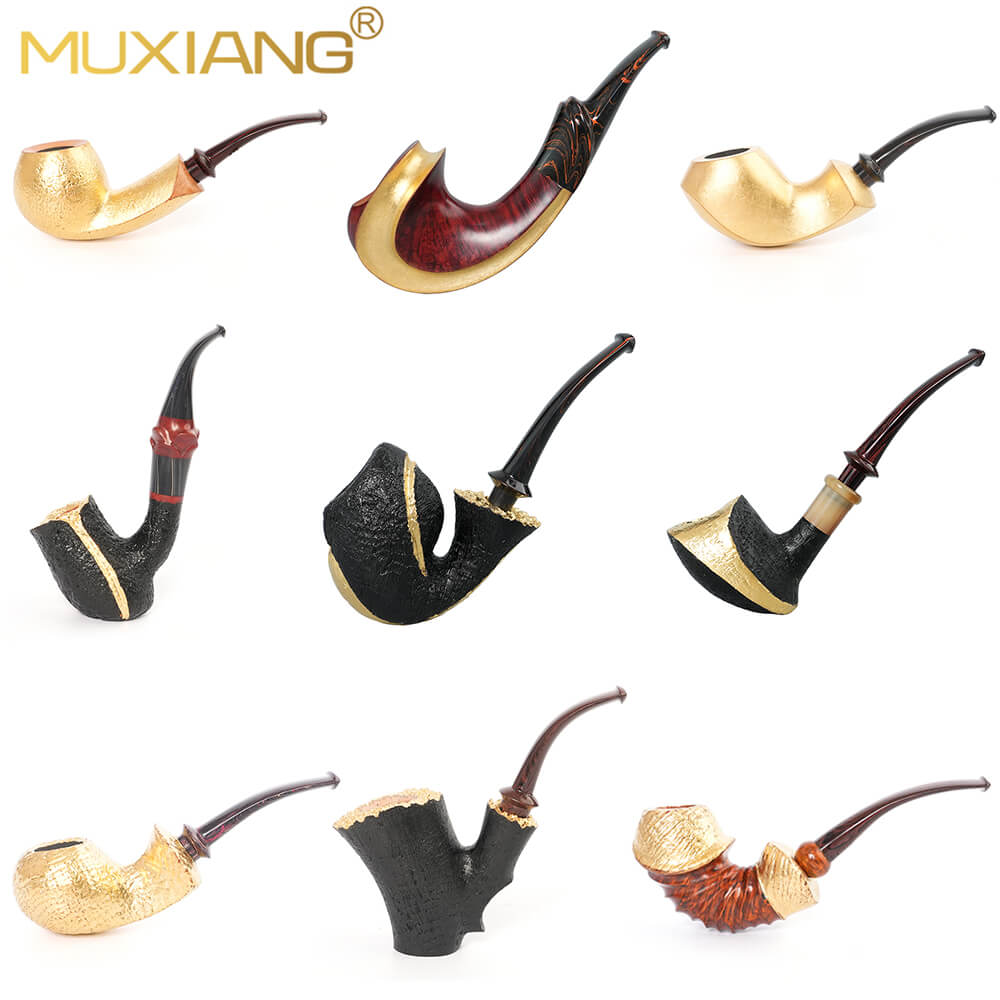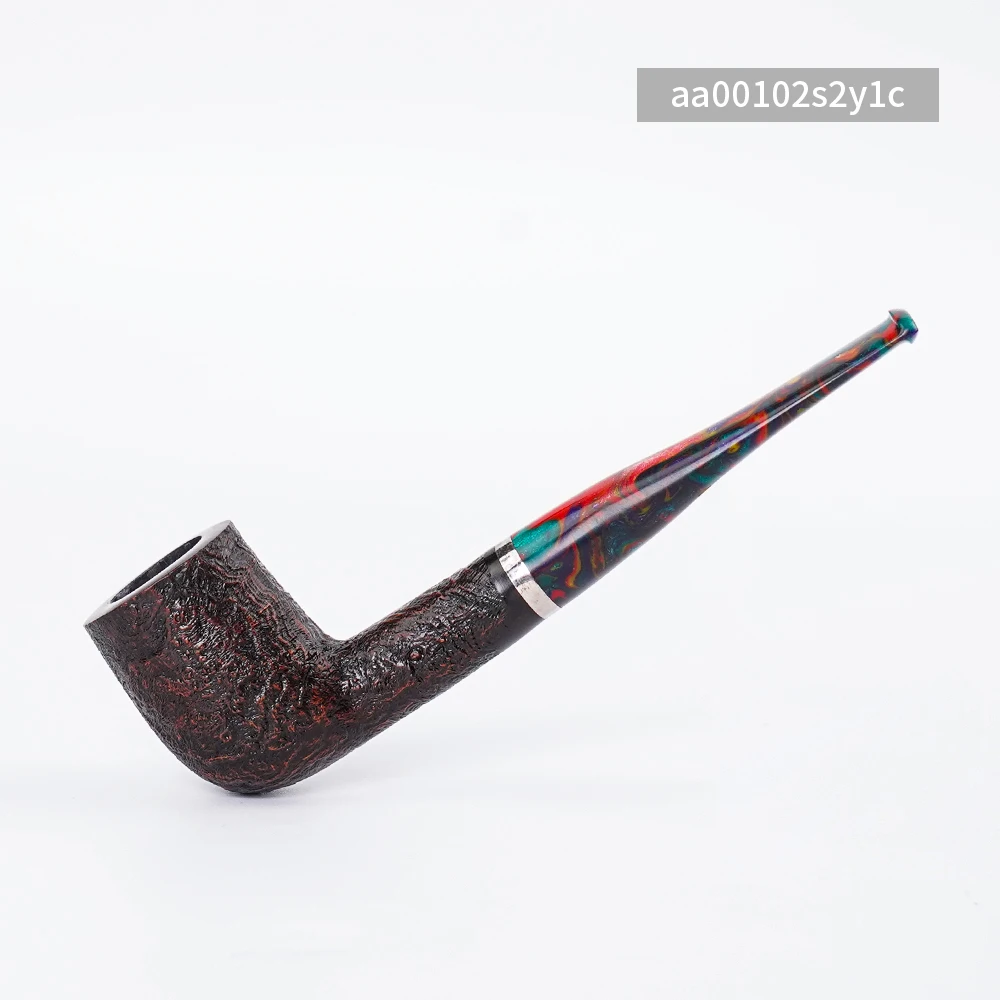Discover What Briar Pipe Smoking Techniques Is
페이지 정보
Writer Bob Date Created25-02-20 20:25관련링크
본문
- Harvesting and Seasoning: Briar roots are carefully harvested to avoid damaging the delicate wood. The raw wood is then subjected to a seasoning process, which involves heating it to remove excess moisture and stabilize the material. Seasoning can take several months to a year, depending on the thickness of the wood.
- Shaping: Once seasoned, the briar wood is shaped into a pipe. This step requires great skill, as the craftsman must carefully carve the wood to create the bowl, shank, and mouthpiece while preserving the natural grain of the briar.
- Vulcanization: To enhance durability, some briar pipes undergo a vulcanization process, where the wood is subjected to high temperatures to further stabilize its structure and improve its heat-resistance.
- Finishing: The final step involves sanding and applying a protective finish to the wood. This not only enhances the pipe's appearance but also helps to protect it from environmental factors.
| Country | Poland | Company | Muxiang briar pipe Services |
| Name | Bob | Phone | Bob briar pipe & Bob LLC |
| Cellphone | 791018598 | bobromano@wanadoo.fr | |
| Address | Ul. Zimowa 146 | ||
| Subject | Discover What Briar Pipe Smoking Techniques Is | ||
| Content | The briar pipe is a traditional smoking instrument that has been cherished by tobacco enthusiasts for centuries. Its enduring popularity stems from its unique combination of durability, aesthetic appeal, and performance. This article delves into the science behind the briar pipe, exploring its botanical origins, structural properties, manufacturing processes, and the physical principles that make it an exceptional tool for smoking.Botanical Origins: The Briar WoodBriar wood, the primary material of briar pipes, is derived from the root system of the Erica arborea, a flowering plant native to the Mediterranean region. Erica arborea, commonly known as the tree heath, thrives in the rocky, well-drained soils of its native habitat. The plant's slow growth rate, often spanning decades, results in a dense, hardwood structure that is highly prized for its strength and resistance to heat. The briar root system is composed of heartwood and sapwood. Heartwood, the older, non-conducting tissue, is denser and darker in color, making it the preferred material for pipe crafting due to its durability and resistance to burn-through. Sapwood, on the other hand, is softer and more prone to damage, and thus it is typically discarded during the manufacturing process. Anatomical Structure: The Science of Briar WoodThe briar wood's unique anatomical structure is a key factor in its suitability for pipe making. Its cellular composition is characterized by a high concentration of xylem tissue, which provides structural support and facilitates water transport in the living plant. After harvesting, the xylem's dense network of cells becomes a natural insulator, minimizing heat transfer and ensuring a cooler smoke when the pipe is used. Briar wood also exhibits a phenomenon known as "porosity," which refers to the presence of small, naturally occurring air pockets within its structure. These pores act as a buffer, absorbing and distributing heat evenly across the pipe bowl. This property not only enhances the smoking experience but also protects the wood from thermal stress. Manufacturing Process: From Harvest to Finished PipeThe transformation of raw briar wood into a functional pipe involves a series of intricate steps, each requiring precision and craftsmanship. Performance Characteristics: The Science of SmokingThe briar pipe's performance is a direct result of its material properties and design. When tobacco is ignited in the bowl, the heat generated is absorbed and distributed by the briar wood's dense cellular structure, resulting in a cooler smoke compared to pipes made from metal or other materials. This cooler smoke is not only more pleasant to inhale but also helps to preserve the flavor of the tobacco. Another critical aspect of the briar pipe's performance is its ability to regulate moisture. The wood's porosity allows it to absorb excess moisture from the smoke, preventing the buildup of condensation that could otherwise make the smoking experience less enjoyable. Maintenance and LongevityLike any precision instrument, the briar pipe requires regular maintenance to ensure optimal performance and longevity. This includes cleaning the pipe after each use to remove residual tobacco oil and carbon buildup. A well-maintained briar pipe can last for decades, developing a rich patina over time that is prized by collectors and enthusiasts. One of the unique characteristics of briar pipes is the development of a "cake," a thin layer of carbon that forms on the inner walls of the bowl. This cake acts as an insulator, protecting the wood from excessive heat and reducing the risk of burn-through. However, the cake must be carefully managed, as an overly thick layer can impede airflow and affect the pipe's performance. Environmental ConsiderationsAs a natural, biodegradable material, briar wood has a relatively low environmental impact compared to synthetic materials. However, the increasing demand for briar pipes has raised concerns about the sustainability of Erica arborea populations. Responsible harvesting practices, such as selective cutting and reforestation, are essential to ensure the long-term availability of this valuable resource. Cultural and Historical SignificanceThe briar pipe holds a special place in cultural and historical contexts, having been a favorite of many notable figures throughout history. Its artisanal appeal and the craftsmanship involved in its creation have made it a symbol of tradition and refinement. In contemporary times, the briar pipe continues to be celebrated by pipe enthusiasts and collectors, who appreciate both its functional and aesthetic qualities. Conclusion The briar pipe is more than just a smoking instrument; it is a testament to the ingenuity of materials science and craftsmanship. Its unique combination of botanical properties, anatomical structure, and carefully honed design makes it an unparalleled tool for tobacco enthusiasts. As long as briar pipes are crafted with care and maintained with dedication, they will continue to be a beloved companion for generations to come. The briar pipe is more than just a smoking instrument; it is a testament to the ingenuity of materials science and craftsmanship. Its unique combination of botanical properties, anatomical structure, and carefully honed design makes it an unparalleled tool for tobacco enthusiasts. As long as briar pipes are crafted with care and maintained with dedication, they will continue to be a beloved companion for generations to come. |
||


 CS Center
CS Center